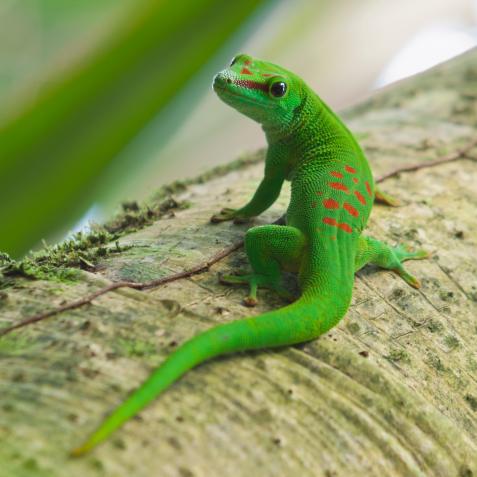
Hildegarde
Biophilic Design is a Natural Recipe for Better Buildings and Healthier People
Large towns and cities are not always designed with green space and natural biodiversity in mind. But using biophilic design in outdoor and interior spaces means people can get more of the health and wellbeing benefits of interacting with nature right on their doorstep.
Pioneers like Harvard social ecologist Stephen Kellert were among the first to champion modern biophilic design. Kellert believed that weaving nature into living and workspaces is critical for good physical and mental health. Studies show that simply seeing trees, or taking short nature breaks lowers stress levels. And living near to nature reduces the risk of illnesses like heart disease and diabetes.
Humans have evolved to gravitate towards nature, Kellert noted, but if we don’t nurture that impulse, it fades. So his principles include access to natural light, air, water, plants, and gardens. Using materials such as wood and stone, natural designs such as leaf or shell patterns, and earthy colors also helps humans to feel closer to nature.
Building in access to animals through bird feeders placed outside windows increases interaction with wildlife. And connecting people to local culture and history through their buildings encourages them to invest more in both the natural and built environment.
Biophilic designs can be seen in cities and buildings around the world. Modern examples include the Jewel Changi Airport in Singapore, with its four-storey tiered forest garden and world’s largest indoor waterfall fed by rainwater. Or the Swedish Mirrorcube tree house hotel, made using plywood and a lightweight aluminum frame wrapped around a tree.
Spectacular biophilic homes include One Central Park in Sydney–apartment blocks featuring hanging gardens on the exterior. The buildings recycle their own water and a suspended motorized mirror array reflects sunlight down onto gardens below. Milan’s Bosco Verticale block is perhaps even more eye-catching with its vertical forest of 17,000 trees, shrubs, and plants.
Green spaces, it must be said, are nothing new: urban parks have provided city dwellers with access to large landscaped parks on the edges of cities since the mid-19th century. Access itself was the problem, as working-class families rarely got to use them. National parks are even further from towns and cities. But biophilic design brings nature closer to home.
Among the benefits of greener cities listed in a World Health Organization report are cleaner air, opportunities for physical and social activity, and improved psychological wellbeing. Studies show that residents of public housing near to trees and grass could cope better with life's stresses. Gardens and green space together helped lower blood pressure and obesity rates

WraithHao
Biophilic design near Hua Shan Hospital in Shanghai, China.
Putting biophilic design to work for society could prevent millions in healthcare costs, with one study estimating annual savings of $93 million in the US alone. Hospital design in particular has historically been influenced by access to sunlight and views of nature. St Elizabeths Hospital in Washington, D.C. was conceived by Dr Thomas Kirkbride in the 1850s to restore patients “to a more natural balance of the senses”.
Modern buildings like the Khoo Teck Puat Hospital in Singapore, with its position next to the cascading waterfall of the Yishun Pond, are closely linked with their surroundings. The hospital channels outdoor air to cool the interior, and uses reflective sunshades to direct light into the wards to brighten them and save energy.
The aim of these designs is to emphasize the human connection to nature by integrating buildings with the local environment. But how do we bring biophilia into our homes? Start with house plants. Scientific studies show that they can help us to de-stress, boost productivity and improve air quality. New smart home apps can also provide sensory nature experiences such as birdsong and a projected forest canopy, helping people to carve out a restful space indoors.

Kseniya Ovchinnikova
Houseplants in the home or office can increase biophilia.
Increasingly, we use our homes as workspaces too, and simple biophilic adaptations can have outsize effects. Stimulus from non-rhythmic visual sources–a fish tank, or perhaps flowers and grasses moving in a window box–improve blood pressure and heart rate. Simple splashes of color can improve creativity (green) and attention span (yellow and red).
But perhaps the best way to transform society with biophilic designs is to start with schools. Children learn better and feel more relaxed in biophilic settings. So the Children and Nature Network is working with schools across the US to create green schoolyards for better physical and mental health and to increase opportunities for outdoor learning.
Biophilic designers are bringing nature into classrooms through natural patterns, shapes and colors, nature photography, artwork and materials like timber and stone. Fresh air flow, green walls, and aquariums all become part of a recipe for improving health and academic success.


















